Mid Life Crisis
Charles Heidsieck
Millésimé Brut Champagne Blend 2000

Bond
St. Eden Napa Valley Cabernet Sauvignon Blend 2002
The spoils of riches continued Friday night with this being opened toward the end. I actually found this to be a touch more youthful than the ‘05 I had about a year ago. At this point in its life, red fruit emerges and dominates...dusty black cherry and high-percentage dark chocolate covered raspberries. The palate revealed bay leaf and dates with a mid palate that was surprisingly dense and powerful. The finish was heavy on cherry-vanilla cavendish pipe tobacco. This likely deserved a table to its own! — 6 years ago
Pressing Matters
R9 Coal River Riesling 2007
Have posted previous tasting notes on this wine and vintage. Owned by Melbourne barrister Greg Melick. A couple of years ago I remember banter between @TheSkip and @Bill Bender about the name. If Bill ever becomes a winemaker he can’t take Pressing Matters as already spoken for. This was a stellar Riesling, one of the best for a while. Mid Lemon in colour with absolute clarity. Lime and Lemon flavours with plenty of acidity. Incredible intensity. A beautiful dry Riesling from the Coal River in Tasmania, cruising at 12 years with more life ahead. Traces of paraffin/kerosene on the nose. — 6 years ago
Red Cap Vineyards
Howell Mountain Cabernet Sauvignon 2009
Starts off a touch musty but that blows off quickly. This evolves very favorably over the 4 hrs it’s consumed, allowing the rich, sweet and savory fruit to fully unfurl. There’s nice mid-palate acidity that adds freshness and a pronounced streak of minerality in the finish. This is excellent and has years of life left. — 7 years ago
Château Cos d'Estournel
Saint-Estèphe Red Bordeaux Blend 2004
On the flight from Dubai to Singapore . Ch Cos d'Estournel, 2004. Deeper core than the Quintet tasted alongside , less bright rim bordering on garnet , but young I suppose for the age , viscous legs . Classic cigar box , truffle and blackcurrant, cassis notes . Serious , cool vintage character. Lovely fruit on the palate , nice balancing acidity , cassis and darker fruits predominating. Tannins slightly drying , though this seems to be entering mid life they still may resolve . There is a nice quantity of fruit , but this does come across as an 'off vintage' , though I don't particularly like that term. Again elegant and reasonably long finish . An interesting pair of wines , this and the Mount Mary Quintet as it happens . — 8 years ago
Xtant Wines
XTANT Napa Valley Cabernet Sauvignon Blend 2002
Really impressed by this one. The second vintage ever produced of Xtant, I believe, this 2002 has held up incredibly well. You can pick up just a bit of garnet on the edge, but overall the color of the wine still retains a rich, youthful hue. Classic Napa cab in all respects from the black currants and hints of leather and camphor on the nose to the rich, evolving mid-palate, through to a balanced, lingering finish. The oak is still beautifully concealed in the fruit, which is pretty impressive given its age. My guess is that this still has several years of life left before it starts turning over. Terrific wine. — 8 years ago
Château Lafon-Rochet
Saint-Estèphe Cabernet Sauvignon Blend 2007
Vaucluse is Michael White's Upper East Side French restaurant with a slight American twist. And so it is the wine list. Large sections of French wine are bookended by their US equivalents. Two pages of Burgundy are followed by a handful of Sonoma and Oregon Pinots. We stayed Old School and went for a Bordeaux. Red fruit, tar, leather, somewhat advanced beyond its decade of life. A tasty mid weight wine that was lovely with the rack of lamb and establishment atmosphere. — 8 years ago

Eldridge Estate
Mornington Peninsula Pinot Noir 2013
Delectable won't find it. But this is their low sulfur pinot. Such an intriguing abundance of aromas here, some even reminiscent of Barolo. There is such a strong scent that reminds me of polished wood at furniture shops. Crushed rose petals, pomegranate juice, cranberry, musk lifesavers, smoke, almond, orange peel, plasticine, leather, raspberry sours and fresh cherry. Palate is bright, juicy and full of life. It drinks in a bright red-fruited manner with the feintest of a tug from the tannin. Juicy acidity to this helps carry through the mid palate and there's quite a long finish additionally — 9 years ago
Thierry et Pascale Matrot
Meursault-Charmes 1er Cru Chardonnay 2004
After literally dozens of Pre-Mox bottles of White Burgundy, it's nice to have a good bottle. Nicely aged nose, rounded and nutty midpalate, good acidity and medium-long finish. Not life changing, but good. UPDATE- A few hours in the glass deepen the mid palate and bring out a floral quality with the integrated oak. Outstanding. — 9 years ago
Thierry Allemand
Cornas Reynard (R) Syrah 2004
2004--really lovely and barely in mid life. — 10 years ago
Château Bel-Air Lagrave
Cru Bourgeois Moulis en Médoc Red Bordeaux Blend 1989
Light earthy nose; Cabernet herbaceousness and wood; mid body, balanced, good tannin/acid structure; long finish. Life left. — 10 years ago
Long Shadows Vintners
Pedestal Columbia Valley Merlot 2006
The 2006 ‘Pedestal’ is a sinfully good warm vintage Merlot by superstar enological consultant Michel Rolland that is drinking marvelously at now thirteen years of age. Following a long decant, the Merlot slowly unveils ripe black currants that combine with sandalwood, cigar ash and Turkish coffee aromatics that meld together in the glass. The palate has tremendous freshness and verve considering its age, as this silky wine effortlessly glide across the mid-palate. Still showing serious power and concentration, the ‘Pedestal’ leads with a deep core of dark fruits that mingle with suggestions of milk chocolate, pipe tobacco, leather and anise flavors that sing in harmony. Fantastic now, this beautiful wine has at least another decade of life left. Drink 2019-2028- 94 — 5 years ago
Domaine de la Janasse
Châteauneuf-du-Pape Red Rhone Blend 2004
Our main course wine with Kentucky Bourbon chicken skewers, Rosemary potatoes in smoked olive oil with snap peas & green beans straight out of garden.
The nose reveals, ripe; blackberries, dark cherries, blue fruit heaven, slightly stewed plums, creamy, black raspberries, strawberries on the high nose and glass edges. Sweet tarriness, anise to black licorice, dry stones, crushed, dry rocks, medium, dark spice, savory, grilled meats, underbrush, limestone & sandstone minerals, steeped tea with beautiful florals of dark red, blue and violets.
The body is round, lush and medium full. The tannins are rounded & well resolved with baby teeth. The structure, tension, length and balance are somewhere around the top of the bell curve with another five years of life ahead. It’s gorgeous as it slides over the palate. Ripe; blackberries, dark cherries, blue fruit heaven, slightly stewed plums, creamy, black raspberries, raspberries & strawberries. Mid red cola, sweet tarriness, anise to black licorice, dry stones, crushed, dry rocks, medium, dark spice with just a touch of heat, savory, smoked, grilled meats, dry tobacco, well worn, softened leather, underbrush, limestone & sandstone minerals, steeped tea with beautiful florals fields of dark, red, blue, violets and soft lavender. The acidity is like a warm, river palate dip. The ripe, juicy, elegant, well balanced finish is delicious and persists a few minutes with excellent florals on the long set.
Photos of; Aerial shot of Domaine De La Janasse, the Galet stones that are a signature of Rhône, Founder of Domaine De La Janasse - Aimé Sabon and their staff at harvest time. — 6 years ago
Clos La Coutale
Cahors Merlot
4$ 375ml closeout? Yes please. Into its mid-life but showing well. Charming and authentic as ever. — 6 years ago
Miani
Colli Orientali del Friuli Friulano
As always with Miani, an extraordinary show, well beyond Grand Cru quality. Developing complexity, balanced and a long finish. Dense and broad, with a sharp en linear structure with its trademark electric and salty minerality on the mid palate. The wine provides such a drinking experience today, but with the structure and intensity that’s provided, I can only imagine that this will have a long life ahead...and I will keep wondering if this man have a limit on what’s possible.. — 7 years ago
Domaine Michel Briday
Rully 1er Cru Chardonnay 2010
Tropical fruit and honey, with bright lemon and yeast notes mid palate, med+acidity still and a spicy finish. Still plenty of life in this one! #chardonnay #whiteburgundy — 7 years ago
Tyrrell's Wines
Stevens Single Vineyard Hunter Semillon 2011
Outstanding mid aged Hunter Semillon. Extremes fresh, crisp and very, very good. Great life. - Phil Laffer — 8 years ago
Horsepower Vineyards
The Tribe Vineyard Syrah 2012
Talk about an introduction to Washington state wines! Wow. @Benjamin Keator and @Keith Fisher were kind enough to share a glass of some big boy WA wines, and both were super unique.
I have never in my life had a Syrah like this. @Mark Flesher was on point when he said the nose had a tuna smell to it. Some also got dill pickle on the nose...for me, it was more Olive. Very red in the glass compared to the inky dark Syrahs that Napa puts out. Again, I wasn't able to stick around to do this justice, but this has a long life ahead. Very crisp acidity on the palate with loads of raspberries and rhubarb. Light on the front and mid palate, but super long finish and strong tannic backbone. A very cool wine. — 8 years ago
Domaine Belluard
Terroir du Mont-Blanc Mondeuse
Outstanding. Very unique mid pallet, needs a little time in bottle but has much more life in store! — 8 years ago
Château Haut-Segottes
Saint-Émilion Grand Cru Red Bordeaux Blend 2010
Dense and concentrated for budget Bordeaux. Seven years old but a lot of life left in it. Heavier focus on Cab Franc yields bigger funk at first. An hour in the funk dials down to a more spicy, black pepper quality. Mid palate fruit before rusty, dusty, Brett-y tannins dominate the finish. Tremendous with duck confit appetizer and hangar steak entree. — 8 years ago
Fox Gordon
By George Cabernet Tempranillo 2012
I’m not familiar with Tempranillo, so I am unsure what its specific contribution to the wine is. I can only compare the wine to the Brothers and Sisters cabernet I’ve recently fallen in love with.
By George shares the same elegance as its sister wine, with a more savoury core, eschewing some sweetness and vibrancy, for darker more brooding flavours. Dark plum, cherry and dried blueberry fruits set the scene, but it’s the smoky cured meats, volcanic rock, cedar and tobacco on the mid and back palate that bring the party to life. It’s a flavour profile I haven’t encountered before, but I like it a lot. The soft tannins are well integrated, the balance slightly acidic, but not objectionable, lending a lingering spiciness to the finish.
Another Fox Gordon masterpiece. The love affair continues… — 9 years ago
La Spinetta
Vürsù Vigneto Starderi Barbaresco Nebbiolo 1997
Perfect right now, just before its mid-life crisis.... — 9 years ago
Cherry Hill Winery
Estate Willamette Valley Pinot Noir 2012
Rainier Cherry with light touches of oak and spice. Well balanced, with a medium body and soft finish. Flavors came to life after decanting for an hour. Great mid-afternoon wine. — 9 years ago
Bodegas y Viñedos Vega Sicilia
Valbuena 5° Ribera del Duero Tempranillo Blend 1984
A bit tight but opens nicely. Decanted for 3 hours. Silky tannin on mid, lengthy finish!! Great balance and plenty of life remaining.. — 12 years ago
Green & Red Vineyards
Chiles Canyon Vineyards Zinfandel 2015
Just wowza: recall drinking this stuff back in mid-90s and it seems like they are one of the few classic Zins still cranking out outstandingly priced vino... this stuff was dense & fairly hi octane - shy nose until well over hour of decant, then strutted sublime full spectrum red fruit culminating in a sweet spiced raspberry / rhubarb pie w/vanillin accents. Suave viscous saturated extracted but never cloying, absolute stunning execution w/very long life ahead. — 6 years ago
Château Mouton Rothschild
Pauillac Red Bordeaux Blend 2014
The 2014 Mouton Rothchild is a stunning wine that is already making its case for one of the wines of the vintage. Graphite, salted dark fruits, tar and mocha with a touch of red bell pepper all marvelously combine on the nose. Silky and marvelously textured, with an incredible complexity and viscosity, the wine shows wonderful brightness and a seamless quality that artfully dances across the mid-palate. Stunning and simply marvelous even at the five year mark, this is only an infant now and has decades of life to go. Try to resist this beauty for at least three more years. Drink 2021-2045- 98 — 6 years ago
Finca Allende
Rioja Tempranillo 2010
Really fruit forward and fresh for a rioja. Sweet round fruit on the front and mid palate, but with real energy and life. Almost none of the traditional leather and cigar box I associate with rioja. Juicy, only medium bodied but very very good. With fernando and yolanda and racquel — 6 years ago
Château Lafite Rothschild
Carruades de Lafite Pauillac Red Bordeaux Blend 2003
On the nose, ripe; blackberries, sweet & sour dark cherries, cooked cherries & strawberries & hues of blueberries. Black tea, cola, soft baking spices; vanilla, light clove & cinnamon. Crushed rocks, stones, limestone, turned, moist black earth, tobacco leaf, saddle-wood, soft leather, dry & fresh dark red florals.
The body is medium edging toward full. The tannins pretty well resolved. The ripe fruits show the hot, ripe vintage. Blackberries, sweet & sour dark cherries, cooked cherries & strawberries & hues of blueberries black tea, cola, soft baking spices; vanilla, light clove & cinnamon. Crushed rocks, stones, limestone, tobacco with ash, some graphite, soft medium dark spice, turned, forest floor, powdery but edgy minerals, saddle-wood, soft leather, dry & fresh dark red florals with some violets on the finish.
This showed better with Ribeye. The Ribeye brought out a fuller, richer wine with even more complexity. 9.35-9.4 with the Ribeye. It just missed 9.2 on its own. It’s big brother the 03 “Lafite” is 💯 point Parker wine.
Photos of; Chateau Lafite, their oak vat fermenters, Estate wine and their magnificent barrel room.
Interesting history and producers notes...Lafite Rothschild has a long and interesting history dating back to 1234, even though the property was not in the Bordeaux wine business at that time.
It is has been largely believed that vines were already planted on their terroir. The owner of the estate at the time, Gombaud de Lafite left his mark, his name. Almost 1,000 years after he owned it, the Chateau is still named after him! The vines were probably in existence at Lafite for over a century, it was not until around 1680, the majority of vineyards of what we know of as Lafite Rothschild today were created. This is because on the 1680 estate manifest, there are six mentions of their Bordeaux vineyards. Jacques de Segur, earns credit for cultivating the vineyard as I wrote in my Colon Segur post last weekend. In 1695, Alexandre de Segur married Marie-Therese de Clauzel, heiress to Chateau Latour. So to dovetail that write up, within a generation, the Segur family married into two of the greatest Bordeaux vineyards, Chateau Lafite and Chateau Latour! When their son, Nicolas-Alexandre passed away, Chateau Lafite and Chateau Latour were separated.
In 1797, Chateau Lafite was sold again. In the deed of sale, Chateau Lafite was described as a Premier Cru of Medoc. This is one of the earliest mentions of what we know of today as Lafite Rothschild producing wines of what would later be classified as an 1855 First Growth.
At that time, of Lafite were managed by the Goudal family. The Goudal family were wine historians and were able to read accurate records and details of the viticulture and marketing plans for Chateau Lafite in the estates formative years. The Goudal family gets the credit for creating the cellar and saving many of the oldest bottles that remain in the cold, dark cellars, including their oldest bottle, the 1797 Lafite!
The start of the famous Rothschild family begins in 1744, with the birth of Amschel Meyer. Amschel Meyer began creating his fortune while working as a merchant at “Zum Roten Schild,” which eventually became the family name of Rothschild.
In 1798 his sons were sent to various cities to create their fortunes. Needless to say, his sons all prospered as did their children in turn. This eventually led to them wanting to own a Chateau in Bordeaux. So in 1853, Baron Nathaniel de Rothschild, an English member of the Rothschild family, purchased Chateau Brane-Mouton. As was the custom of the day, the new owner renamed it using his name and Chateau Mouton Rothschild was born.
This was followed in 1868, when James Rothschild, another member of the family purchased Chateau Lafite, which was now a coveted First Growth.
On 8 August, 1868, Baron James d’Rothschild purchased Chateau Lafite, which was sold at a public auction in Paris. It’s assumed, he bought the property for family competitive reasons looking to one up his brother, the owner of Mouton Rothschild. At that time, Mouton Rothschild was only a Second Growth at the time. But, that does not paint the entire picture. The 1855 Classification had not taken on the importance associated with it the we see it today. Plus, buying Lafite was a reasonable investment as the vineyard sold for about 8 times its earning potential.
The actual Chateau is one of the older structures in Bordeaux, as part of the building dates back to the later part of the 16th century. In 1868, the vineyard took up 135 hectares, of which 74 hectares were cultivated with vines. Production was much smaller in those days than it is today as it was between 4,000 and 5,000 cases.
Just three months after the purchase, Baron James d’Rothschild passed away and Chateau Lafite Rothschild became the joint property of his three sons; Alphonse Rothschild, Gustave Rothschild & Edmond Rothschild. Since 1868, Chateau Lafite Rothschild has remained in the hands of the of Rothschild family. The new owners renamed the estate Chateau Lafite Rothschild.
Jumping ahead to the modern age, in 1962, the Rothschild family added to their holdings when they purchased Chateau Duhart-Milon, a Fourth Growth vineyard also located in Pauillac. It was owned by the Casteja family for more than a century, Chateau Duhart Milon suffered from neglect and was in a awful condition. By the time Duhart Milon was obtained by the Rothschild family, the vineyard was down to only 17 hectare which required extensive renovations.
Baron Eric Rothschild, nephew of Baron Elie Rothschild, took over the management of Lafite Rothschild in 1974. Baron Eric Rothschild was part of the fifth Rothschild generation to inherit Chateau Lafite Rothschild. In 1984, the Rothschild family added to their holdings in Bordeaux with the purchase of Chateau Rieussec in Sauternes.
1987 was a difficult vintage, but because that was the year Lafite celebrated the inauguration of their wine new cellar, they had a lot to be excited about.
The new cellars were built under the supervision of Catalan architect Ricartdo Bofill, is both underground and circular, with a vault supported by 16 columns, giving the structure a majestic architectural style. The cellar holds 2,200 barrels, which is about 55,000 cases of wine. The construction took two years to finish and was completed in 1988.
Domaines Baron Rothschild became one of the first Bordeaux properties to invest in South America when they purchased Vina Los Vascos from a Chilean family. The owners of Lafite Rothschild continued expanding their holdings with the purchase of Chateau lEvangile in Pomerol from the Ducasse family, who owned the property for almost 100 years.
The wine making at Chateau Lafite Rothschild was managed by Charles Chevallier, who began his position in 1994. Charles Chevallier was replaced by Eric Kohler in January 2016. 2017 saw another change at the estate when Jean Guillaume Prats replaced Christopher Salin as the President of Domaines Baron Rothschild.
Perhaps, it’s the most refined of the First Growth. The wine, like all First Growth’s takes decades to mature. It has remarkable staying powers. Bottles of 1870 Lafite Rothschild discovered in the Glamis castle remain profound at more than 140 years of age! It is consider by many Master Sommeliers to be the best wine in the world.
Chateau Lafite Rothschild is one of the earliest major Bordeaux estates to bottle their own wine. In 1890, they bottled a large portion of the wine and again in 1906. Part of the estate bottling was due to requests from Negociants who were willing to pay more for Chateau bottled wines. Also, bottling was primarily done to combat piracy. At the time, it was known that merchants in some countries, like Russia were bottling cheap wine and placing labels from Lafite Rothschild on the bottles. The Koch’s famous Jefferson bottles were not the first attempt at counterfeiting.
Prior to 1996, some would say the property had its share of ups and downs. The 1960’s and 1970’s were not great for Chateau Lafite Rothschild. But since 1996, Lafite Rothschild has been producing some of the best wine in their history!
Sadly, only the wealthy can afford to purchase it. Price aside, there is no denying the level of quality. In 2003 Lafite Rothschild produced a wine that is possibly unequaled by the estate at any time in their long history. Hence, my purchase of their 03 second wine. 2009, 2010 and 2016 are not far behind.
Starting in about 2008, Lafite Rothschild became the most collectible wine from Bordeaux. Prices exploded due to demand from China as Chinese businessmen bought them as gifts or bribes depending on you look at it.
The reason this started was Lafite Rothschild paid for product placement on the number one rated Chinese soap opera on television. Characters in that show were pictured enjoying life with Lafite Rothschild and since then demand went through the roof as did priced.
However, Issac Newton had it right when he declared “What goes up, must come down.” Prices for Lafite Rothschild plummeted after 2011. By the difficult 2013, prices were finally starting to hold firm, but many of the vintages that were setting price records on a daily basis had lost close to 50% of their value.
Starting with the 2012 vintage, Chateau Lafite Rothschild began instituting anti-counterfeiting measures. From 2012 forward, to help fight, rampant counterfeiting, the estate places a seal of authenticity on the capsules of both Lafite Rothschild and Carruades de Lafite. The seal features a unique, numbered code that can be checked on their website, to verify if the wine is real.
The 112 hectare vineyard of Chateau Lafite Rothschild is planted to 70% Cabernet Sauvignon, 25% Merlot, 3% Cabernet Franc and 2% Petit Verdot. This shows a slight change in the vineyard.
While Cabernet Sauvignon remained at 70%, today there is slightly more Merlot, less Cabernet Franc and the Petit Verdot has been added since the mid 1990’s.
Located in the far north of the Pauillac appellation, only the small, Jalle de Breuil stream separates the vineyards from St. Estephe. You could divide the vineyards of Chateau Lafite Rothschild into three sections with 100 separate parcels in all. The estate has close to 50 hectares of vines located close to the Chateau, on both sides of the D2, which offers gentle rises in elevations of up to 27 meters. They also have about 50 hectares vines planted on the plateau in the Carruades sector, where they have two blocks of vines, one of which is inside the vineyard of Chateau Mouton Rothschild. It is interesting to note that even though the parcels in the Carruades sector give their name to the second wine of the estate, those vines are almost always placed in the Grand Vin.
There are also vines adjacent to, and interspersed with the vineyards of Chateau Duhart Milon. The property also consists of a smaller, 4.5 hectare parcel of vines located in the Saint Estephe appellation, “La Caillava”. The vines in St. Estephe are situated not that far from Cos d Estournel, which are located on a larger a parcel known as Blanquet. The vines in Saint Estephe are allowed to be placed into the wine of Chateau Lafite Rothschild because those vines were used to produce Lafite in 1885, at the time of the classification. The vineyards are close to their famous neighbor Mouton Rothschild.
Located just south of the Chateau, the best terroir of Lafite Rothschild has a thick layer of gravel with sand, clay, marl and limestone in the soils with rolling, gravel slopes. The gravel can be as deep as 4 meters in some parcels.
It is important to note that even though their vineyards are in the far north of Pauillac, most of the soil is pure gravel, rocks and stones. With more than 50% of the soil consisting of gravel, that is a large part of the reason Lafite Rothschild has such elegant, feminine textures and that coveted sensation of minerality.
On average, the vines are close to 40 years of age. However, Chateau Lafite Rothschild has much older vines. In fact, they have some vines that are more than 100 years of age planted in the La Graviere section. That small parcel of Merlot vines dates back to 1886. Less than 1% of the vines are that old.
Additionally, they have a small section of Cabernet Sauvignon that dates back to 1922! Other old vines range from 50 to 90 years of age! They also maintain some of the oldest Petit Verdot vines in the Medoc that was planted in the early 1930’s.
At Chateau Lafite Rothschild, between 1% to 1.5% of the vineyard is replanted every year. Vines less than 20 years of age are never included in the Grand Vin.
The vineyard of Chateau Lafite Rothschild is planted to a vine density that ranges from 7,500 to 8,500 vines per hectare. Only organic fertilizers are used in the vineyards of Lafite Rothschild.
During harvest, the goal is not to pick at the maximum level of ripeness. Instead, they are seeking a blend of grapes at differing levels of maturity, which gives the wine its unique textures, freshness, aromatic complexities and elegant sensations.
Lafite Rothschild is the largest of the First Growth vineyards with close to 112 hectares of vines. A large portion of the estate is taken up with stunningly, beautiful landscaping, lakes, trees and parkland.
At one point in time, Chateau Lafite Rothschild produced a dry white, Bordeaux wine that was sold as Vin de Chateau Lafite. The wine was produced from a large percentage of Semillon, blended with a small amount of Sauvignon Blanc. The last vintage for their white wine was 1960. The wine was sold as a generic AOC Bordeaux blanc with a simple, scripted label, black and white label.
Lafite vinification takes place in 66 vats that are a combination of 29 wood vats, 20 stainless steel tanks and 17 concrete vats that range in size from as small as 45 hectoliters up to 123 hectoliters in the concrete and as large as 270 hectoliters for the wood. The wide range of vat sizes coupled with different materials allow Chateau Lafite Rothschild to vinify depending on the needs of each specific parcel and grape variety. The stainless steel tanks and oak vats are used for Cabernet Sauvignon. The Merlot is vinified in the concrete tanks. Malolactic fermentation occurs in smaller, stainless steel tanks that vary in size from 25 hectoliters up to 60 hectoliters. At this point, Chateau Lafite Rothschild does not yet use gravity to move the fruit and juice in the cellar. It’s a good bet that a remodel is coming soon.
The average annual production of Chateau Lafite Rothschild ranges from 15,000 to 20,000 cases of wine per year, depending on the vintage. They of course make this second wine, Carruades de Lafite, which due to the name and association with the Grand Cru, has also become extremely collectible. Carruades de Lafite takes its name from a specific section of their vineyard that is located near Mouton Rothschild. Carruades is actually one of the older second wines in Bordeaux, as it was first produced in the mid 1850’s. About 100 years later during the mid 1960s, the estate reintroduced their second wine naming it Moulin de Carruades. The name was changed again in the 1980’s to Carruades de Lafite.
There is also a third wine which is sold as an AOC Pauillac that is produced from declassified fruit from Lafite Rothschild and Duhart-Milon.
The blend for Chateau Lafite Rothschild changes with each vintage depending on the character and quality of the vintage. Generally speaking, the amount of Cabernet Sauvignon in the blend ranges from 80% to 95%. Merlot is usually 5% to 20%. Cabernet Franc and Petit Verdot usually varies from 0 to 5%.
— 7 years ago




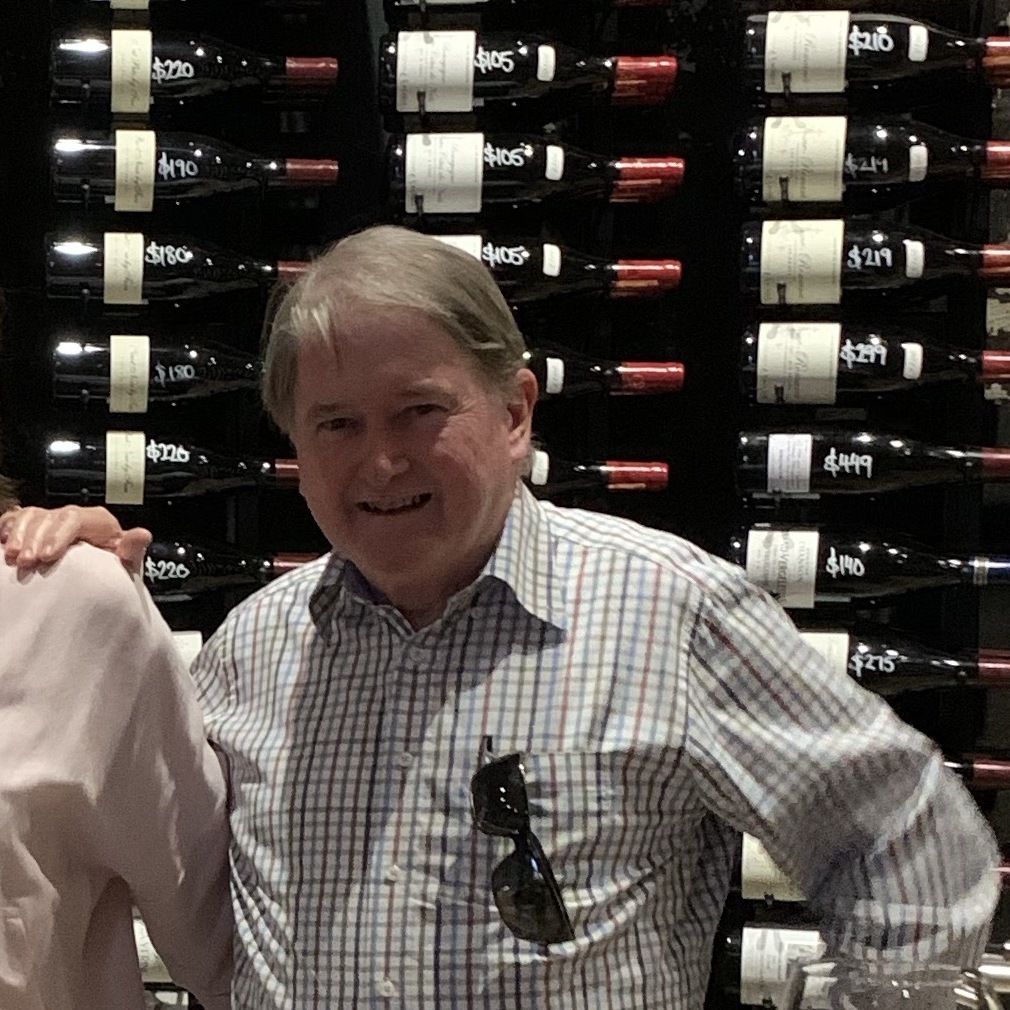


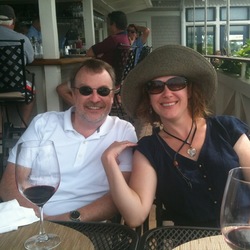



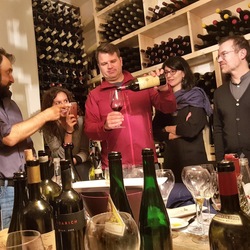

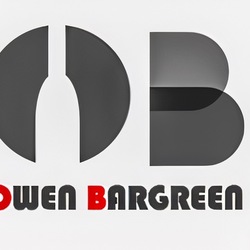





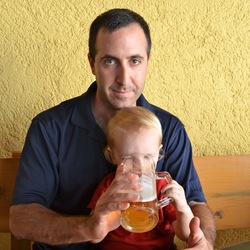


James Webb
Life is short - drink vintage Champagne. Hugely complex nose. It’s brown sugar, poached Granny Smith apples, but underneath a tropical baked pineapple note. Tertiary notes of deep white flowers and lemon. This juxtaposition between fresh, bright fruit, and deeply brooding rich sugary toasty notes is...Truly stunning. The nose is one of the most complex in Champagne I can recall to date. Goes on with autolysis but with cinnamon and sugar. Gorgeous. The palette snaps alive with malic notes, good acid, the wine is still quite alive. It goes on and on, the green apple provides such freshness. The mid palette is expansive and rich, it’s teeming soft tannins. The finish is long and beautiful, it begs for another sip. — 5 years ago